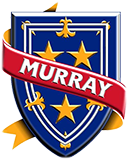Home > History
History of Murray & Calloway County
Calloway County, was formed in 1822, the 72nd in the Commonwealth.
Parceled from Hickman County, it encompasses 395 square miles. It was
named in honor of Col. Richard Callaway. (Note: throughout the history
you will find two spellings of this name: Callaway and Calloway -
depending upon the books used in the reference).
At one time it included what is now Marshall County. It is bounded on
the North by Marshall County, East by the Tennessee River, South by the
Tennessee state line and West by Graves County.
The county included: lands (in the western section) as flat as prairie;
once known as 'barren lands', but later covered with heavy timber.
The soils were particularly fertile and well adapted to the growth of
"Gold Leaf Tobacco"--the chief product of the county. At one time, there
were as many as 15 tobacco factories here.
The principal waterways included the Blood River, Clark's River,
Rockhouse, Bee and Jonathan Creeks.
The first settlement was probably in 1818, by David Jones and James
Stewart from Caldwell County. This was in the vicinity of the settlement
of Wadesboro. Wadesboro was also the site of the first county seat.
This community flourished with over 300 citizens. It became a center for
land speculation. Many emigrants as well as the speculators came here in
search of vacant lands when the public lands were offered for sale by
the legislature. It was indeed a thriving town with much accompanying
excitement and activity. It quickly lost its prominence when the lands
were parceled and sold. It fell into ruins with many of the citizens
moving away. The county seat was then moved to Murray.
During the time of the Civil War, Calloway County was a center for
intense Confederate feelings. As many as 500 men joined the Confederate
ranks, with approximately 200 to the Federal forces.
It was the scene of many skirmishes during the later part of the War.
Many small bands of marauders, wearing both uniforms, frequented the
area. They plundered many, many citizens of their food, money, horses
and were responsible for 30-40 murders. But with peace and time the
hostilities and grievances of the war were stilled and the citizenry
once again could enjoy their beautiful county.
Fort Heiman, in the southwest corner of Calloway County, was occupied
for a time by Confederate forces under General Abram Buford, with one
brigade of cavalry, one regiment (3rd of Kentucky) infantry (under Col.
Holt), and a battery of light artillery. These were under the control of
Gen. Nathan B. Forrest when he made the successful assault on
Johnsonville, Tennessee in 1864. Col. A. P. Thompson, a native son of
the county, was killed in the attack on the fort at Paducah in March,
1864.
Richard Callaway, for whom Calloway County was named, had a long history
in Kentucky. He was part of the group of Col. Boone's in 1775 that began
the First Road of Trace from Long Island on the Holston River to
Boonesborough on the Kentucky River.
His name appeared for Boonesborough in 1775 as a representative of the
Colony of Transylvania.
The first ferry to be established in the state was at Boonesborough in
October 1779 and was by the act of the Virginia legislature given and
granted to Richard Callaway.
One of the first families to reach Boonesborough was Richard Callaway's,
in or about September 1775.
Richard Callaway was credited with the first crop raised in Madison
County. The crop was corn. He as well as at least 20 other men
accomplished this in 1775.












